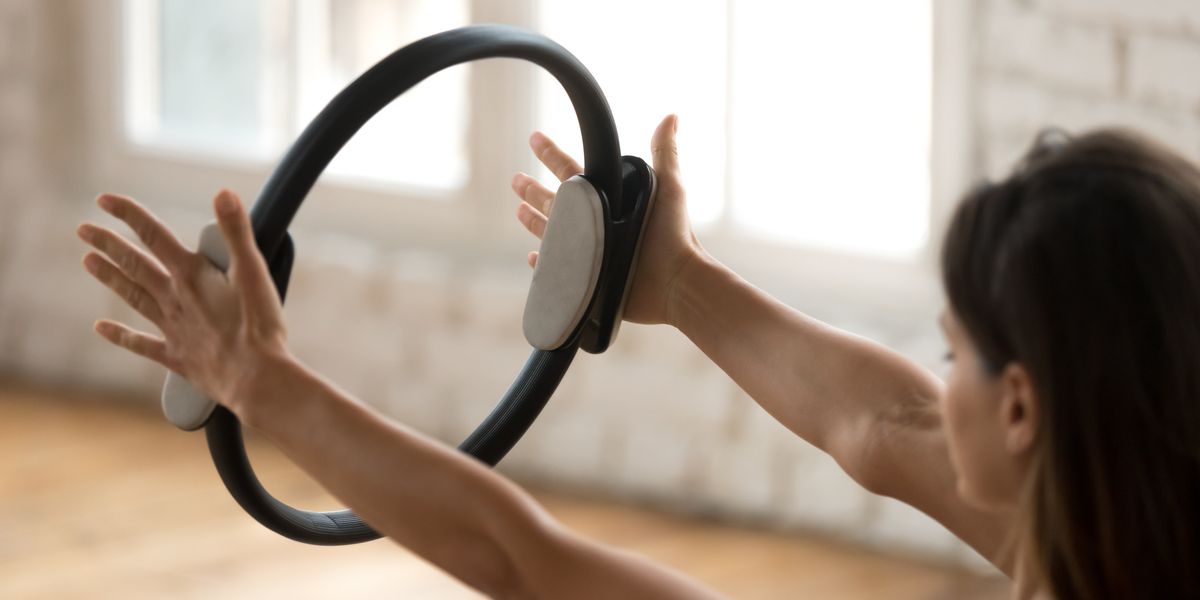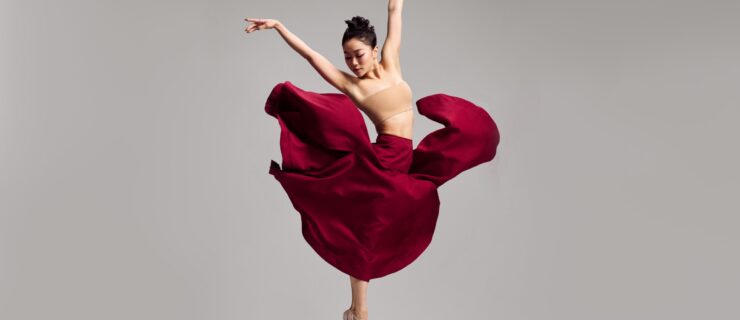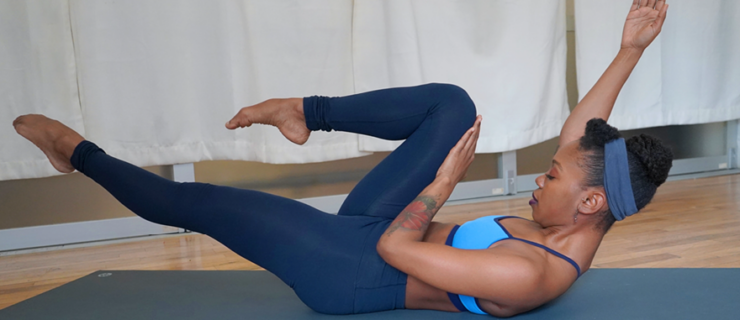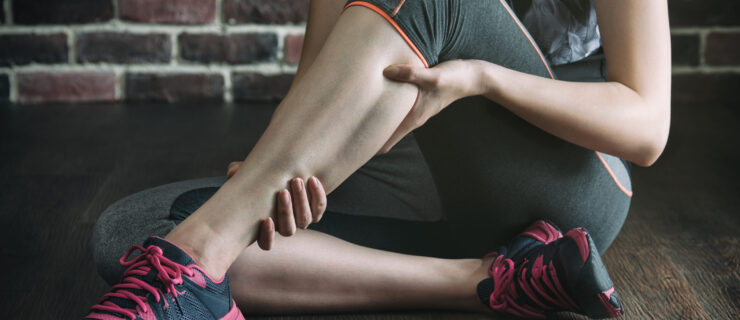4 Targeted Cross-Training Exercises to Tune Up Your Port de Bras
Ballet naturally creates strong legs. Arms, however, are another story. Many dancers are relatively weak in their upper bodies. They struggle with messy, floppy or stiff port de bras—or the dreaded “chicken wings.” The good news? Targeted cross-training exercises can build strength in your upper body without adding bulk, and open your chest, upper back and sides. They offer a shortcut to smoother, freer, more supported port de bras.
Side Lying Arm Circle
 All photos modeled by Elaine Hanson. Nathan Sayers
All photos modeled by Elaine Hanson. Nathan Sayers
Many dancers keep tension in their upper backs, so it’s important to warm up the area before dancing, says Jennifer Green, a physical therapist who owns New York City’s PhysioArts. Before class, lie on your right side with your left leg bent in a loose parallel passé. With the left hand, trace a circle along the floor from your knee, over your head, behind your back, then returning to your knee. Reverse the circle, repeat three to five times, then switch sides.
As your arm reaches around, extend through the upper back and twist your trunk. Keep your breath and eyes connected to the movement the whole time so that you train your body to relate your arms to your spine. This arm circle is a great way to start the day—it gently warms and limbers the upper back and chest muscles, allowing you to move your arms in their full range of motion. It also releases tension that can cause stiff port de bras.
Pilates Magic Circle Series
 Nathan Sayers
Nathan Sayers
No reformer handy? A Pilates ring is an excellent standby. Ashley Pierson, a Pilates coordinator at Equinox in New York City, recommends using the ring to add resistance to traditional ballet arm positions. Begin by holding the ring en bas (with slightly rounded elbows). Squeeze the ring 10 times. Lift your arms to first, then fifth, repeating the 10 pulses in each position. Or, you can try pulsing continuously while moving through your port de bras from en bas to fifth. Whichever version you choose, be sure to maintain proper placement in your torso: Don’t let the shoulders or ribs rise as the arms lift. Instead, draw the shoulder blades down and plug the upper arm bone into the socket. In addition to toning your arms, this exercise trains your trunk to maintain correct alignment as your arms rise over your head.

Nathan Sayers
Many dancers have loose shoulder joints but tight chests, creating dangerous joint imbalances that leave them susceptible to injury. Open your chest and strengthen your back with this exercise: Put your hands on either side of the ring, holding it behind you. With slightly bent elbows, attempt to squeeze the ring (without letting your shoulders roll forward). The ring will not move! Pierson suggests three sets of 10 squeezes. This strengthens the rhomboids and trapezius muscles to help keep your shoulder blades in place. The trapezius also helps you support your arms from the back—which means it’s easier to hold proper positions, especially second. The best part? This will make you stronger without adding significant muscle mass. “These exercises work smaller, stabilizing muscles of the shoulder girdle,” says Pierson, “so don’t worry about bulking!”
Tabletop Extensions

Nathan Sayers
For multi-tasking dancers, tabletop exercises (on hands and knees) can provide a full core, back and shoulder warm-up. “Don’t do heavy-duty strengthening before class,” Green says. “Go for muscle warmth, not fatigue.” Start in a tabletop position with your knees directly underneath your hips and your hands directly underneath your shoulders. Engage your deep core muscles to maintain a neutral spine as you extend one limb at a time without shifting your body. Next, reach the right arm forward while the left leg reaches back, then switch sides. Because your torso is parallel to the floor, this exercise challenges the entire core, working your abdominals, obliques, shoulders and back. It will give you the strength to keep the spine quiet as your limbs move through space.
Resistance On-The-Go

Nathan Sayers
Thera-Bands are many dancers’ go-to, portable resistance tools. They’re also a favorite of physical therapists because their possibilities are endless. Try the “classic” external rotator cuff exercise. Hold a looped, light to medium band in your hands, with your elbows bent to 90 degrees by your sides. Stretch the band apart by rotating the upper arm bone outward in the shoulder socket. Your elbows should not move. Hold for a moment, then slowly resist the band’s pull as you bring it back to the starting position. Aim for three sets of 10 rotations. A strong rotator cuff equals a healthy, balanced shoulder joint, preventing injuries from partnering and quick arm movements.

Nathan Sayers
To strengthen the second position port de bras, Green has dancers wrap a semi-light band behind their back and hold the ends. Start with your elbows bent to 90 degrees and hands facing forward, and then extend the arms to a true second with rounded elbows. This exercise will give your second position more support and create resistance through your port de bras so that your arms don’t look weak or floppy.
Practiced regularly, these exercises will awaken integral stabilizing muscles and help you eliminate noodley, weak arms. Then you can transform your shoulder and core strength into true port de bras artistry.






